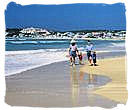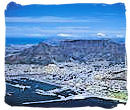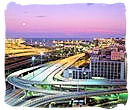 |
||
Legacy of the French Huguenots in South AfricaThe history of the French Huguenots in South Africa started with the edict of Nantes enacted in France in 1598. It gave the protestants in catholic France the right to practise their belief freely, have their own church services and keep their French citizenship.
This law was revoked in 1685 by king Lodewijk the 14th with far-stretching consequences. The French protestants (also known as huguenots) immediately lost their citizenship and the practising of their religion was prohibited. Although they were threatened with torture and death, most of the huguenots refused to renounce their religion. Thousands fled from France to the protestant Netherlands. Seeing that the settlement at the Cape required extra manpower to provide for the growing demand of fresh products by the settlers and the ships of the Company, the Dutch East India company decided to send more settlers to the Cape colony. 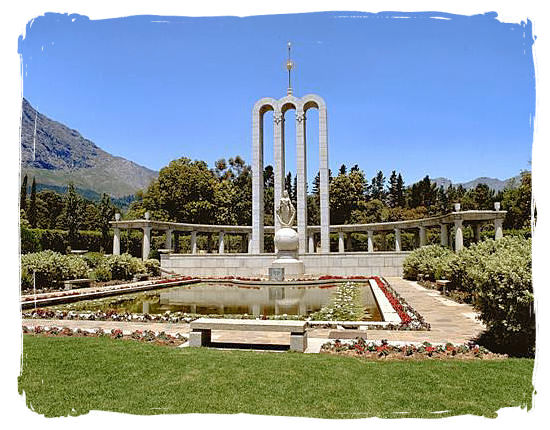 The Huguenot museum and monument at Franschhoek, in commemoration of the French Huguenots in South Africa copyright © South African tourism They were under the impression that the French refugees would gladly move to another country and so they encouraged them to move to the Cape colony in South Africa. Only a small number of some two hundred refugees decided to go. The French settlers would be dispersed between the Dutch farmers in the Drakenstein area, where they would quickly learn to speak Dutch and assimilate into the population of the colony. 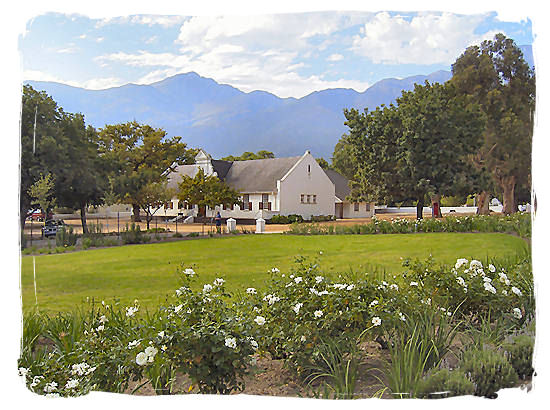 The old Dutch Reformed church in Franschhoek built in typical Cape Dutch style The French Huguenots and the Huguenot Museum in South Africa copyright © South-Africa-tours-and-travel.com The ships in which the huguenots sailed, were small and dirty and the settlers could take along only the bare essentials. After a journey of more then three months the first ship, the "Voorschoten", arrived in Saldanha bay in April 1688. From there they were taken with the “Jupiter” to Table Bay. A month later the "Oosterland" threw out its anchor, followed later by another ten ships. At their arrival the huguenots got dried peas, salted meat and ship's biscuits to eat, the same as what they had eaten during their three months at sea. They received wood and tools to build a shelter, where after they were taken to their new abodes about 70 km inland. 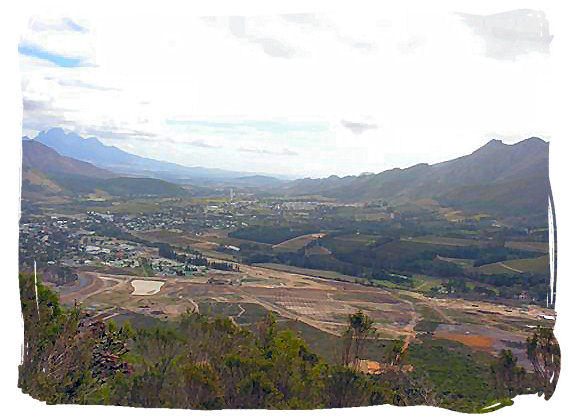 The famous Franschhoek valley, wine heartland of South Africa hemmed in by towering mountains, with the town of Franschhoek The French Huguenots and the Huguenot Museum in South Africa copyright © South-Africa-tours-and-travel.com There they settled in what was then known as the "Olifantshoek vallei" (Elephant corner valley). After their arrival and settlement this area became known as "Le Coin Francais" or "Le Quartier Francais", which means "French corner" or "French quarter". Today it's called "Franschhoek" (French corner). To protect themselves against wild animals and extreme weather conditions, the huguenots built themselves rough shelters of stones, plastered with clay and covered with thatch. It did not take them long to find out which type of wood was most suitable for the making of furniture, wagon wheels or fire wood. Through hard work and perseverance they transformed the wilderness around them into one of the most beautiful and fertile valleys in the Cape. 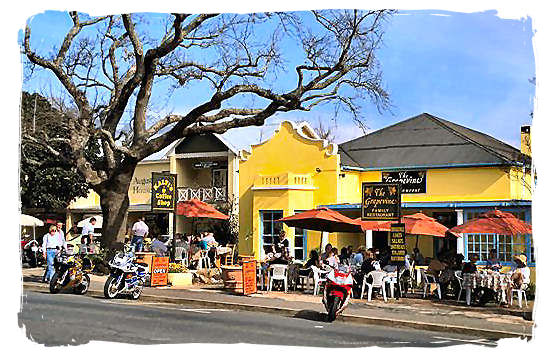 Franschhoek, a delightful village, housing some of the top restaurants and wine cellars in the country The French Huguenots and the Huguenot Museum in South Africa copyright © South African tourism Initially the Huguenots were allowed to use the French language in the school and the church. Governor Simon van der Stel however was adamant that Dutch should be the only spoken language in the Colony. In 1701 the Calvinist minister Pierre Simond was stopped preaching in French and in school only the Dutch language was to be used. By the middle of the 18th century nobody spoke French anymore. 200 Huguenot immigrants in the Cape Colony may seem a small and insignificant number, but in 1689 that was about 1/6th of the total white population in the cape Colony. They were brave, hard working and diligent people and most of them were highly skilled craftsmen or experienced farmers. So one can imagine that their culture, knowledge and skilfulness must have had considerable impact on the settlement in the Colony. 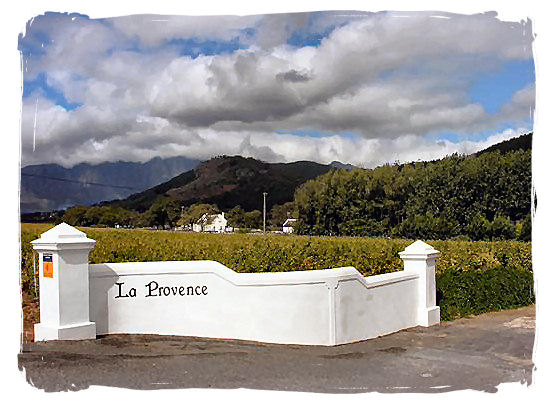 La Provence, one of the oldest wine estates in the Franschhoek valley The French Huguenots and the Huguenot Museum in South Africa copyright © South-Africa-tours-and-travel.com The French refugees weren’t the first to grow and produce wine in the Cape, but with their knowledge and experience in wine making that the Dutch didn't really have, they certainly laid the foundation of the fame and quality of South Africa’s wines today. A number of wine estates in the Cape still have French names, as a reminder of their contribution to South Africa’s famous wine-making industry. When John Ovington visited the Cape in 1693, he wrote: "Their vineyards have been established over an area of more than 75 English miles, yet they still have their eyes on large pieces of virgin soil before them. In this district they farm with livestock, plant maize, establish vineyards and improve everything conscientiously for their greatest benefit….Their vineyards, which they have multiplied to a large variety of cultivars, can now also provide the passing ships…" 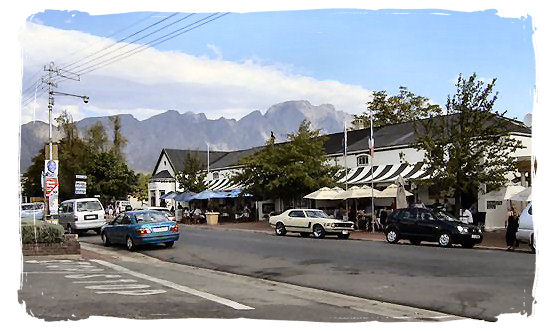 The main street in the town of Franschhoek The French Huguenots and the Huguenot Museum in South Africa copyright © South-Africa-tours-and travel.com Many South Africans today have surnames that bear witness to their French Huguenot ancestry. Examples of these are Joubert, du Toit, de Viliers, Theron, du Plessis and Labuschagne amongst others, which are all common names in present day South Africa. Top of Page |
|
|
|
|
||

